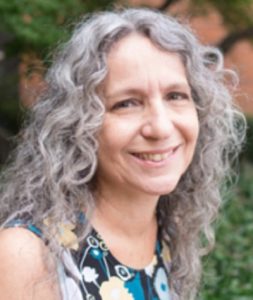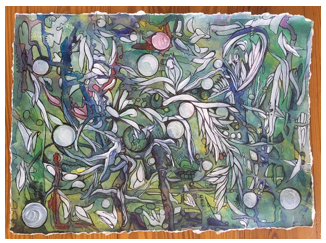By Clara Keane | December 7, 2017 | #WeAreArtTherapists
The AATA is very pleased to introduce our new Board President as this week’s Featured Member. She shares her vision for the Association and some of her personal passions in the interview below.

Christianne Strang PhD, ATR-BC, was sworn in as Board President of the American Art Therapy Association on November 11, 2017. Dr. Strang has 30 years of clinical art therapy experience and currently provides art therapy services to individuals in treatment for anorexia and bulimia. She is also a research instructor in the Department of Psychology at the University of Alabama at Birmingham (UAB), where she teaches graduate and undergraduate courses in behavioral neuroscience, developmental neuroscience and introduction to creative arts therapies. Prior to serving as Board President, Strang served as the Treasurer for the American Art Therapy Association (2008-2012) and the Art Therapy Credentials Board (1999-2004).
Dr. Strang’s academic research is focused on the role of neurotransmitter receptors in visual processing and how that processing is affected in Alzheimer’s disease. She enjoys spending three weeks every summer co-directing a neuroscience immersion course at the Dauphin Island Sea Lab. She took the same course herself as a UAB student in 1998. For more of Dr. Strang’s professional bio, visit UAB’s website.

“Untitled” by Christianne Strang. Spring, 2016. Mixed media/watercolor.
Artist statement: “I’m able to create art fairly frequently. Most often I use a mixed media technique that I call reverse coloring. The first layer is wet-on-wet watercolor that, when dry, can serve as the basis for a design. It can be as simple as outlining the gradations of colors to create an abstract design – a doodle that results from the outlining of colors instead of coloring in the lines.”
When asked about why art therapy is effective, Strang answers, “There are so many things: It bypasses the cognitive messages and habits, identifies and reinforces new ways of thinking and interacting, builds healthier habits and patterns of behaving, and provides the opportunity to develop and explore relationships in new ways.” She adds, “It provides an outlet for wordless experiences or for those things that words cannot adequately explain and allows for powerful experiences to be shared, witnessed and communicated in a way that leaves a record for both the client and the witness(es).”
We asked Dr. Strang a few questions to get to know her better:
What are your top priorities as President?
- To approach governance with the goals of looking at how and why we do things the way we do; I hope to make sure we are following best-practice instead of old habits.
- Enhancing communication and building relationships – both within the board and between the board and the membership.
- Supporting advocacy for art therapy licensure, insurance reimbursement, and research.
What are your thoughts about the opportunities and challenges facing the art therapy community today?
We have the opportunity to share our profession and advocate for our mission, our vision, and our values with an unprecedented number of people–including the general public, federal agencies, and national non-profit organizations. Leveraging this opportunity will allow the AATA to support art therapists, to continue to increase the depth and breadth of art therapy services, and, by extension, to increase support of our clients–who stand at the core of our work.
We hold our mission and values dear, not only because they are a legal obligation, but because they underpin our profession. Successful advancement of our mission requires the development of AATA-driven initiatives to ensure that the Association is the voice of art therapy and to build public awareness about how members (and nonmember art therapists) provide life-changing mental health services within our values and ethics.
Was there a memorable experience you had as President-Elect that changed your perspective or confirmed something you already knew?
Not one experience, but many times, over and over. I am reminded that when I truly listen, and hear, that is when I learn the most – even if it is difficult. I think that we can appreciate the humanness of all of us, especially in these polarized times, if we take the time to listen to and connect with each other, even when we disagree.
Granted any technological (and monetary) resources necessary, what research question would you ask and explore?
I’m an unrepentant nerd. I would love to research and understand the connection between processes involved in art making and the mechanisms by which those processes affect the nervous system and our emotional states. For example, we’ve all seen instances when creating an image of fear serves to alleviate that fear and can lead to the reduction of fear or anxiety on a long term basis. How does that happen? We know the brain structures involved in fear learning, how the sympathetic nervous system is activated during fear, and how cognitive processing can affect (for better or worse) the fear state. We know the brain structures involved in visual perception, and we know how deliberate movement is initiated. What we don’t know is how they all come together in art therapy. I’d like to better understand the mechanisms by which making art in art therapy can result in long-term individual change.
